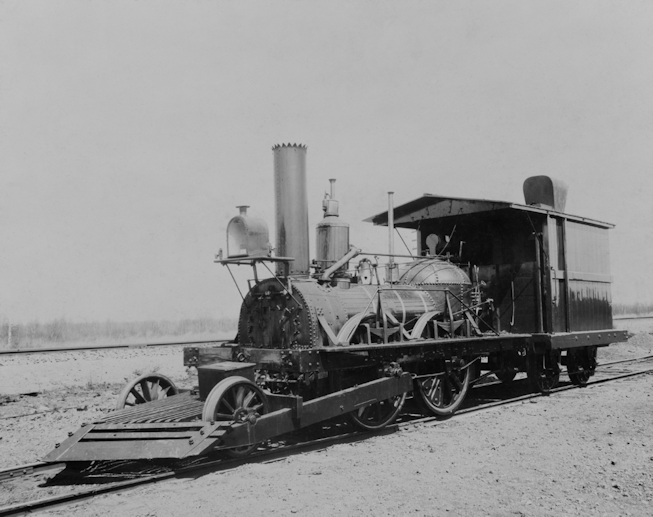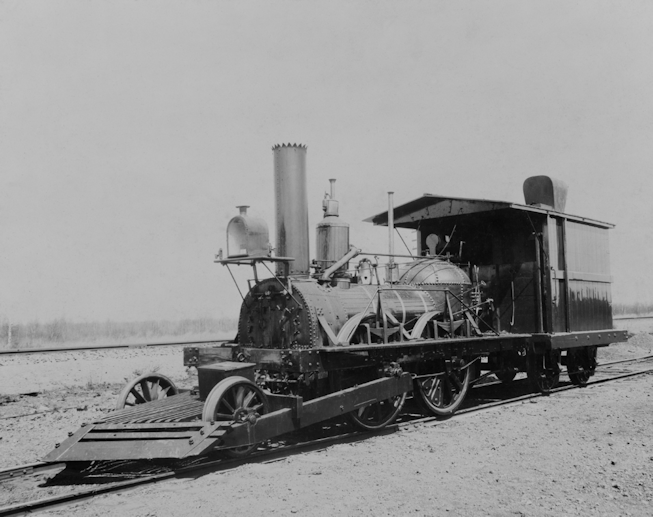The Transcontinental Railroad, a monumental achievement in American history, represents an extraordinary advancement in transportation, commerce, and communication across the United States. This engineering marvel was completed in 1869, connecting the eastern and western parts of the country, thus forever transforming the landscape of American society. In this article, we will delve into the origins of the Transcontinental Railroad, its historical significance, current status, nearby attractions, and the best places to visit, stay, and dine along this historic route.
Origins of the Transcontinental Railroad

The conception of a Transcontinental Railroad emerged in the mid-19th century, driven by the ambition of a rapidly expanding nation. The desire for connection and accessibility became paramount as the United States pushed westward. Initially, the challenge lay not only in the physical construction of the railroad but also in the underlying political and economic motivations that fueled its inception.
In 1862, President Abraham Lincoln took a significant step forward by signing the Pacific Railway Act. This groundbreaking legislation authorized the construction of the railroad and provided federal support to the Union Pacific and Central Pacific Railroads. The act was a game-changer, establishing a public-private partnership that allowed for the rapid development of the West, while also paving the way for increased commerce, trade, and the movement of people.
The promise of the Transcontinental Railroad was immense. It promised to reduce travel time from months to mere days, facilitating the movement of settlers, goods, and resources. The federal government provided land grants and financial incentives, demonstrating its commitment to the project and recognizing its potential impact on the nation’s growth.
Construction of the Transcontinental Railroad

The actual construction of the Transcontinental Railroad was a monumental undertaking fraught with challenges. The Union Pacific Railroad began laying tracks from Omaha, Nebraska, while the Central Pacific Railroad constructed its line eastward from Sacramento, California. Both companies faced geographical obstacles, from the Rocky Mountains to treacherous terrain, requiring innovative engineering solutions.
To build the Central Pacific segment, the railroad employed thousands of laborers, including a significant number of Chinese immigrants, many of whom had fled poverty and violence in their homeland. Their contributions were invaluable, as they faced extreme working conditions, including avalanches and dangerous tools, yet persevered to lay over 700 miles of track. The Union Pacific similarly employed a diverse workforce, including Civil War veterans and Irish immigrants, all committed to the success of the project.
On May 10, 1869, the two companies finally met at Promontory Summit, Utah, symbolizing the completion of this monumental project. The ceremony was marked by the driving of the "Golden Spike," a ceremonial final spike that connected the two lines and symbolized the unity of the nation. This event marked not just the completion of a railroad but the forging of a national identity that extended from coast to coast.
The Historical Significance of the Transcontinental Railroad

The completion of the Transcontinental Railroad transformed the United States in numerous ways. Economically, it facilitated the movement of goods, services, and people across long distances with unprecedented speed and efficiency. Farmers in the Midwest could ship their produce to distant markets, while new markets emerged in the West for manufactured goods from the East.
The railroad also played a pivotal role in westward expansion, encouraging settlers to move to new territories. The government promoted land sales and settlement along the railroad routes, leading to the creation of new towns and cities. This demographic shift contributed to the cultural and economic diversity of the nation.
Moreover, the Transcontinental Railroad revolutionized communication, enabling faster mail delivery and the dissemination of information across great distances. It became an essential part of the nation’s infrastructure and was instrumental during significant events, including the Civil War and the later development of the American West.
However, the impact of the railroad also came with significant consequences, particularly for Native American communities. As settlers moved westward, they frequently clashed with Indigenous peoples, resulting in displacement and the loss of traditional lands. This darker aspect of the railroad’s legacy reminds us of the complex interplay between progress and its implications for marginalized populations.
Current Status of the Transcontinental Railroad
While the original lines of the Transcontinental Railroad have been modernized and expanded into a vast network of freight and passenger services, several portions remain active today. Major railroads, including Union Pacific and Amtrak, utilize parts of the historic routes for freight and passenger services. A significant portion of the original railway aligns with modern tracks, providing a tangible connection to this iconic piece of American heritage.
The current use of the tracks underscores the ongoing importance of rail transportation in the United States. Freight trains continue to move cargo across the nation, demonstrating the enduring relevance of the Transcontinental Railroad in facilitating commerce and industry.
Visiting the Transcontinental Railroad
For history buffs, rail enthusiasts, and travelers alike, the legacy of the Transcontinental Railroad can be explored in numerous ways. Here are some highlights of places to visit, stay, and eat while following this historic path.
Places to Visit

One of the top destinations for anyone interested in the Transcontinental Railroad is Golden Spike National Historical Park in Utah. Visitors can witness the location where the two railroads met and enjoy exhibits that narrate the story of this incredible feat. The park offers interpretive programs, reenactments, and the opportunity to explore the original railroad grade. You can watch reenactments and explore the park's visitor center for deeper insights into the railroad's history. For a visual guide, check out my YouTube video on the Golden Spike Historical Park here: RVerTV Golden Spike Historical Park Video. The park also features a set of replica locomotives, allowing visitors to experience the grandeur of steam locomotion.

In addition to Golden Spike, the California State Railroad Museum in Sacramento is another essential stop. This award-winning museum houses an extensive collection of locomotives and railroad artifacts, showcasing the evolution of rail transport in the country. Visitors can explore restored train cars, learn about the history of railroads in California, and engage with interactive exhibits designed to educate guests about the significance of rail transport in America's development.

Outdoor Activities
The regions along the former Transcontinental Railroad offer various outdoor activities for both history seekers and nature enthusiasts. In Utah, you can hike in the nearby Antelope Island State Park, which boasts breathtaking views of the Great Salt Lake and opportunities for wildlife viewing, including bison and a variety of bird species. The park is renowned for its stunning sunsets and diverse ecosystems, making it a perfect spot for outdoor activities.
For river rafting, the American River in California runs parallel to parts of the rail line, providing thrilling adventures while offering stunning views. Kayaking, fishing, and camping are also popular activities in the surrounding areas. The natural beauty of the landscape along the railroad makes it a haven for outdoor exploration.
Places to Stay
When planning your trip to explore the Transcontinental Railroad, consider staying at the historic hotels along the route. In Utah, the Hilton Garden Inn in Ogden offers a comfortable stay with modern amenities, conveniently located for visitors looking to explore the history of the railroad. For a more rustic experience, the Golden Spike RV Park is right near the historical park, providing an excellent spot for RV travelers.
In Sacramento, the Federal Hotel presents a charming and historic ambiance, making it a great base for exploring the city’s rich railway history. Additionally, the Emerson Street Bed and Breakfast provides a cozy atmosphere and personalized service, ensuring a comfortable stay while immersing yourself in the local culture.
Camping and RV Parks
For those traveling in RVs, the route offers numerous campgrounds suitable for all types of travelers. One particularly noteworthy spot is Antelope Island State Park, which features stunning views, hiking opportunities, and RV connections available. This campground allows you to immerse yourself in nature while having easy access to the historical significance of the railway.
Additionally, the Humboldt County Fairgrounds in California provides RV camping with easy access to various historical sites along the railroad. The campgrounds often host events and festivals, giving visitors a chance to engage with the local community while enjoying the outdoors.
Places to Eat
Food is an integral part of any trip, and you'll find a variety of dining options along the Transcontinental Railroad. In Ogden, Utah, enjoy local cuisine at the Ogdensburg Restaurant, known for its hearty dishes and welcoming atmosphere. With a menu that features farm-fresh ingredients, it's an excellent spot for a delicious meal after a day of exploring.
While in Sacramento, you can’t miss Mulvaney’s B&L, a farm-to-table restaurant that highlights local produce and flavors. Here, the chef crafts seasonal menus that showcase the best that California has to offer, making dining at Mulvaney’s a memorable culinary experience.
In addition to these, local diners and cafes found in towns along the route offer comfort food and friendly service, allowing you to savor the local culture with every bite. Whether it's a classic American breakfast or a delectable dinner, there are countless options to satisfy your palate.
Conclusion

The Transcontinental Railroad remains a celebrated icon of American ingenuity and determination. Its construction was pivotal in shaping the nation and facilitating expansion into the West. Today, exploring the remnants of the railroad offers a unique reflection on America's history while providing wonderful opportunities for adventure and discovery. Whether you visit historical sites, hike through scenic landscapes, or enjoy local cuisine, the journey along the Transcontinental Railroad will be one worth taking. It’s not just a path across the land; it’s a fascinating narrative of progress, struggle, and the enduring spirit of innovation that has shaped the United States into what it is today.
Thanks, all.
~Russ
Check out my RVerTV YouTube Travel channel at: https://www.youtube.com/@rvertv
Purchase our rated #1 Armchair Traveler series, coffee mugs, t-shirts, sweatshirts, travel mugs, hoodies and caps at: https://rvertv.tv/






2 comments
Very interesting, thank you Russ!
Hey Russ, check it out! The wife and I have been watching your videos for a couple years, but just now signed up for your monthly letter. We’re from Wy-o-ming, but now in Colorado. Love your journeys throughout the west, and now getting interested in eastern travels. We’re following your “Heck Yeah” tour in 2025 and hope to visit some of the places you’ve shown. Thanks so much for your channel, and better keep on truckin’. God bless.